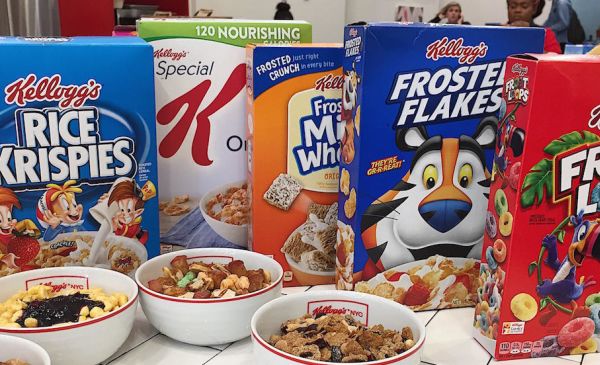Have you ever been in a café when suddenly, over in the corner, a baby starts giggling? If you have, you might have noticed that every woman, regardless of age, looked up, momentarily distracted from her coffee, magazine or conversation. It’s as if women are hard-wired to tune into this sound.
Check out YouTube and you’ll notice that among the most-watched videos on the site, is one of a baby giggling. More than 107 million people have downloaded it.
There can be no doubt – sound is immensely powerful. And yet 83 per cent of all the advertising we’re exposed to on a daily basis (bearing in mind that the average person will see two million TV commercials in a single lifetime) focuses, almost exclusively, on the sense of sight. That leaves just 17 per cent for the remaining four senses. Consider to what extent we rely on sound. It confirms almost all our digital and electronic connections. We rely on it to dial or text on our cell phones. Interestingly, the revenue from the slot machines in Las Vegas fell by 24 per cent when the whirring and tinkling sounds was removed. Furthermore, experiments conducted in restaurants show that when music slower than the rhythm of a heartbeat is played, we eat slower and we eat more!
Can sound make us buy more, want more, dream more and eat more? Any 50-year-old American can sing a whole range of television jingles from the 1970s – they are all well stored in the recesses of our brain. Yet if you were to ask the same of the generation who have recently come of age, you will find them stumped. Have the magical tunes disappeared, or has the advertising world lost sight of the fact that people do indeed have speakers at home?
I decided to put these questions to the test.
By teaming up with neuroscience marketing company BUYOLOGY INC and Elias Arts a sound identity company, we wired up 50 volunteers and subjected them to neuroscience-based galvanic, pupil and brainwave methods. We learnt that sound has remarkable power. This may not be surprising for many, but it was certainly surprising to realize just how many commercial brands have made their way into the world’s ten most powerful sounds over the past 20 years. The sound of brands came in ahead of some of the most familiar and comforting sounds of nature. But it was in the second and third places where the most astonishing surprises occurred.
Forget the sound of waves or the song of birds – they didn’t even make the top 10 – but a computer chip, which most of us have never even seen, took the prominent second spot. Who could have imagined just how strongly we would respond to the sound of Intel? This result indicates that repetition is the key, since most of us can’t even sing it. What this tells us is that there’s no limit to this phenomenon, because after all, a computer chip doesn’t really have a sound.
The third most powerful sound is a young one – not much older than 10 years – and yet it had such a profound effect on our research subjects that the moment they heard it, they removed their headsets, and reached for wherever they keep their cell phones to answer its ‘vibrating’ call. Regardless of whether the phone is switched to ‘silent’, the vibration has a sound of its own. It’s hardly surprising that the Blackberry has been dubbed a CrackBerry – even President Obama is hooked.
Psychologically speaking, this is not a happy discovery. Recent studies show that the first thing we do when we wake is check our BlackBerry. Going to the bathroom, brushing our teeth and eating breakfast takes a back seat. Increasingly people sleep beside their phones – that message that arrives at 4.00am is now a priority!
Even though the sound of a vibrating phone has taken second place to a baby’s giggles, it seems that in just over a decade technology provides the predominant sounds for daily life. Perhaps it’s just a matter of time before brains registering the sounds of sizzling steaks, newly lit cigarettes and sparkling sodas, will become sounds that are immediately brand-related and we will think Outback, Marlboro and Dr Pepper.
THE MOST ADDICTIVE SOUNDS IN THE WORLD
Non-branded and branded sounds
1. Baby giggle
2. Intel (Singers Pictured Above)
3. Vibrating phone
4. ATM / cash register
5. National Geographic
6. MTV
7. T-Mobile
8. McDonald’s
9. ‘Star Spangled Banner’
10. State Farm
Branded sounds
1. Intel
2. National Geographic
3. MTV
4. T-Mobile
5. McDonald’s
7. State Farm
8. AT&T
9. Home Depot
10 Palm Treo
11. PC Richard
Top 10 non-branded sounds
1. Baby giggle
2. Vibrating phone
3. ATM / cash register
4. ‘Star Spangled Banner’
5. Sizzling steak
6. Hail to the Chief
7. Cigarette light and inhale
8. ‘Wedding March’
9. ‘Wish Upon a Star’
10. Letterman theme
The sound study was conducted in partnership with BUYOLOGY INC and Elias Arts and the LINDSTROM company.
The Blake Project Can Help: Accelerate Brand Growth Through Powerful Emotional Connections
Branding Strategy Insider is a service of The Blake Project: A strategic brand consultancy specializing in Brand Research, Brand Strategy, Brand Licensing and Brand Education




